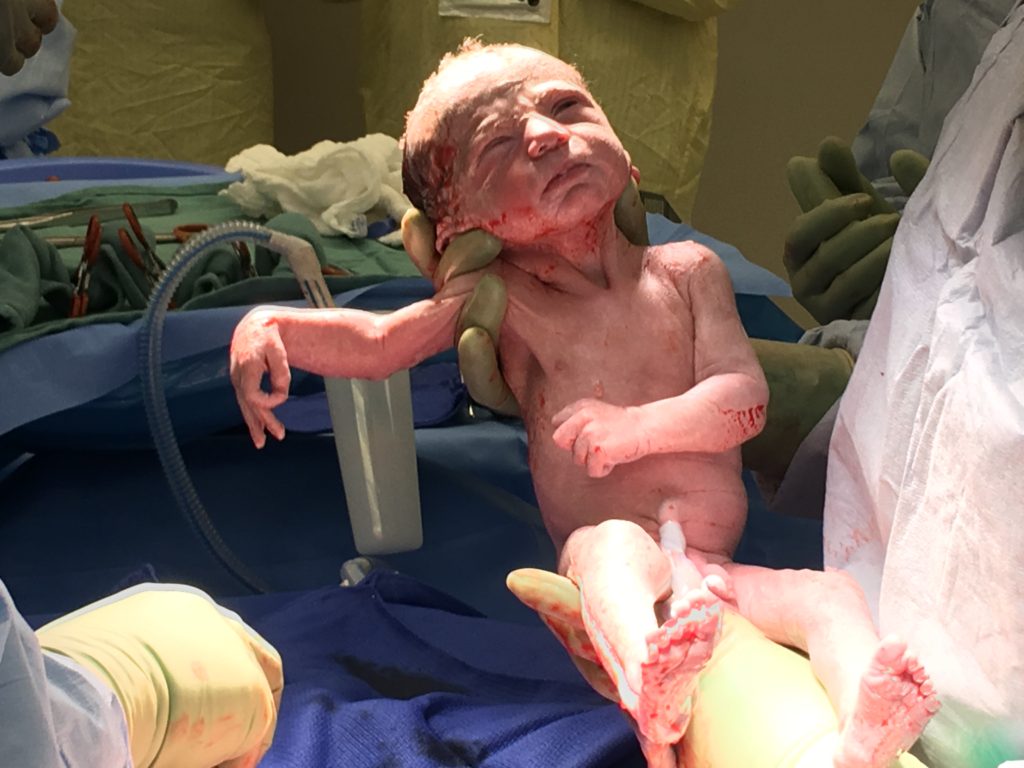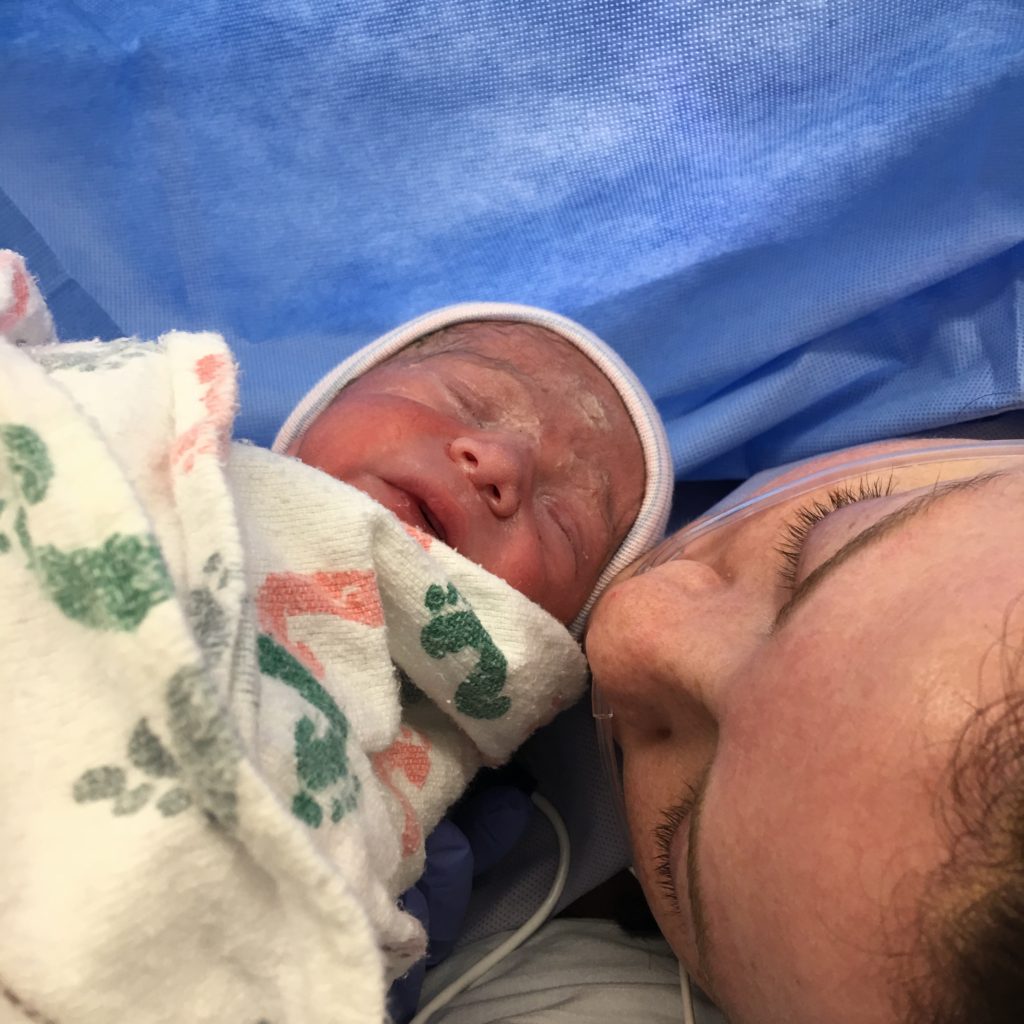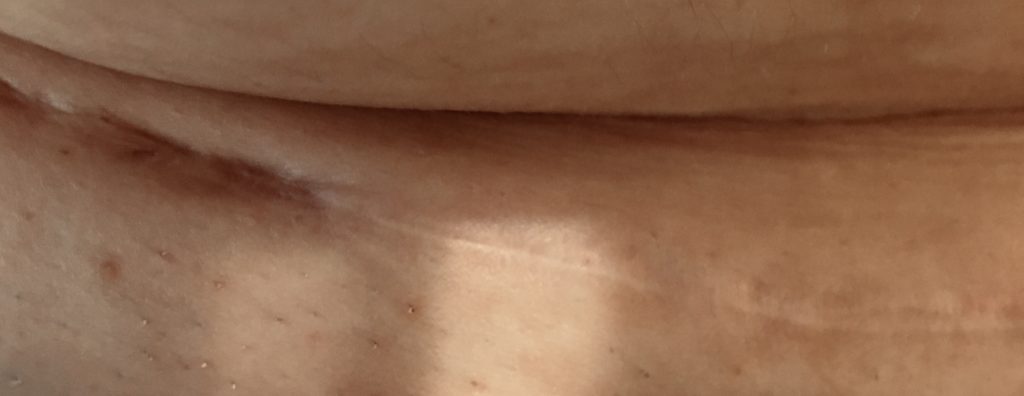April is C-section Awareness Month. It’s not something that most people feel needs “awareness”, but we section moms appreciate it. For most of us, this wasn’t just major surgery, this was a procedure that saved both our lives and the lives of our children.
I only have the perspective of a mother that went through emergency C-sections. With both of my children, I had every intention of delivering them vaginally, with no pain medication. With my second child, I was even willing to go a natural route and considered using hypnobirthing sound effects to ease my labor.
My birth plan was scrapped, and it didn’t go the way I planned.
My first child was stubborn. When my water broke right at midnight, I expected contractions to start immediately. I expected to barely make it to the hospital, which was 30 minutes away from where we lived at the time. I wound up being in active labor for 16 hours. I only dilated 4 centimeters. My baby’s heart rate dipped gradually with each contraction. My doctor told me he had to get out, and it had to be a rush job. I was sobbing. My birth plan was scrapped, and it didn’t go the way I planned.

Umbilical Cord Issues
It felt like my body had failed me, but that didn’t matter because my little boy was absolutely perfect. He was a perfect size. He had some breathing trouble when he came out. He managed to get tangled in his umbilical cord, which was a contributing factor to him needing to be delivered via emergency section. He was on a CPAP machine for an hour, while I was in the recovery room, but afterward, he never had another respiratory complication.
Preeclampsia Sets In
With my second child, I kept my original birth plan and planned on having a VBAC, or, vaginal birth after cesarean section. At 33 weeks, I developed preeclampsia which is a pregnancy complication brought on by swelling in the face and hands, high blood pressure, and protein in the urine. This complication was identified at a regularly scheduled doctors appointment. Two hours later, I was in triage at the hospital, being hooked up to a fetal heart monitor and having tests run on my urine.
Once pre-eclampsia was determined, I was placed in an ambulance to the nearest hospital with a NICU. I was in the hospital 3 days before I delivered. I went into the hospital on a Tuesday, was scheduled to be induced on Friday, the day I would hit the 34-week mark, and also when my husband was scheduled to be back in the country (but that’s a story for another time). Unfortunately, it was discovered on Thursday that full eclampsia was setting in, even with all the medication I’d been on to slow it down.

So 2 hours later, I was again, getting prepped to have an emergency c-section. My youngest was only 4 pounds and 16 ½ inches long, but he was so perfect. He spent 3 weeks in the NICU, before he finally came home, and he’s been thriving ever since. Even though my births didn’t go the way I planned, I am so thankful for them, because they got my 2 greatest joys to me safely.

C-section Mom Club
Having spoken with other C-section moms, they all seem to agree, this was the route their births were meant to go. There are many factors that can result in mothers having to deliver via c-section, other than fetal and maternal complications.
Moms like Mallory C., Katelyn A., and Bridget W., had planned c-sections. They had generally easy recoveries and were able to get back to work once their maternity leaves were up. Other moms like Ashley B., Madison W., and Meghan R., had their sections due to breech babies or small pelvis.
There are many factors that can result in mothers having to deliver via c-section.
Moms of multiples, like Rachel S. and Katelyn B., also had c-sections. About 40% of multiple births result in c-section. Hollie T. and Whitney D., had to have their c-sections due to very large babies.
Kasha W. was able to have her first 2 children vaginally, but her third child was already 42 weeks along and stubborn, so she had to come out via c-section. Finally, moms like Kelsey E. and Donna G. both had emergency c-sections with their first children, and then were able to have successful VBACs with their other children.

Interesting Facts about C-sections
What’s in a Name
The Cesarean section was allegedly named for Julius Caesar (not the one you’re thinking of) being delivered this way, citing that his mother had passed away in the 9th month of her pregnancy, and he was cut out of her abdomen. This is actually later found to be untrue (his mother lived another 40 years after his birth), but it is still understood that this is where the name came from.
First U.S. Cesarean
The very first successful Cesarean section performed in the United States was on January 14, 1794. Elizabeth Bennett delivered her daughter becoming the first woman in the United States to deliver via c-section and survive. Fun fact: her husband performed the surgery! As of 2018, about 32% of all babies delivered in the United States were delivered via C-section.
Disadvantage of C-Sections
Recovery Can be Difficult
Recovery and nursing are often hard for some mothers who have had pregnancy complications; though most c-section moms have a generally easy recovery and are able to nurse immediately. It is recommended to hold off on sexual intercourse for 6 weeks, until a full recovery can be made, as it is with vaginal delivery.
Missing the “Golden Hour”
When seconds-old babies are able to be placed immediately on their mothers’ chests and can nurse, that is not the case for babies delivered by cesarean. Usually, after a c-section, the mother is able to see her baby, kiss them, and then the mother is closed up, while the baby is cleaned, weighed, and wheeled off to the nursery, though some hospitals are making efforts for c-section mothers to have a “golden time” with their babies, if there are no complications with mother or baby, while Mom is having her abdomen sewn up.
Spinal Block Can be A Scary Experience
Another downside is the side effects that no one tends to fill you in on for this surgery. The spinal block is slightly terrifying. You’re vulnerable, an anesthesiologist is staring at your backside and bare butt while they stick a needle in your spine. Usually a few minutes later, the shakes will start.
As a result of shakes, most moms are strapped down to the surgery table (I had heating pads wrapped around my hands and legs to help some, which was a nice touch). Once the spinal block hits your body, you won’t feel the scalpel, but you will feel the pressure. Your organs will be moved all around and a catheter will drain your bladder.
Organ Complication
After the surgery, you could have an organ complication, for instance, I had so much scar tissue on my bladder after my first c-section, that any future biological children I have will also have to be delivered this way. But the moment you get to see a sweet little baby face (your baby’s face!) peeking at you over the curtain, your life will forever and change, and you’ll know that it was worth it.

One thing all of us c-section mamas can agree on, we’d do it all again if it meant that we got to have our babies in our arms safely. Our kids will all wind up in the same boat. They’ll be loved, they’ll be happy, they’ll learn, they’ll make friends, they’ll grow up fine. No matter how they were brought into the world.
I hope this article provides you with some insight in the days to come, and your sweet baby is healthy, happy, and loved. Congratulations!
